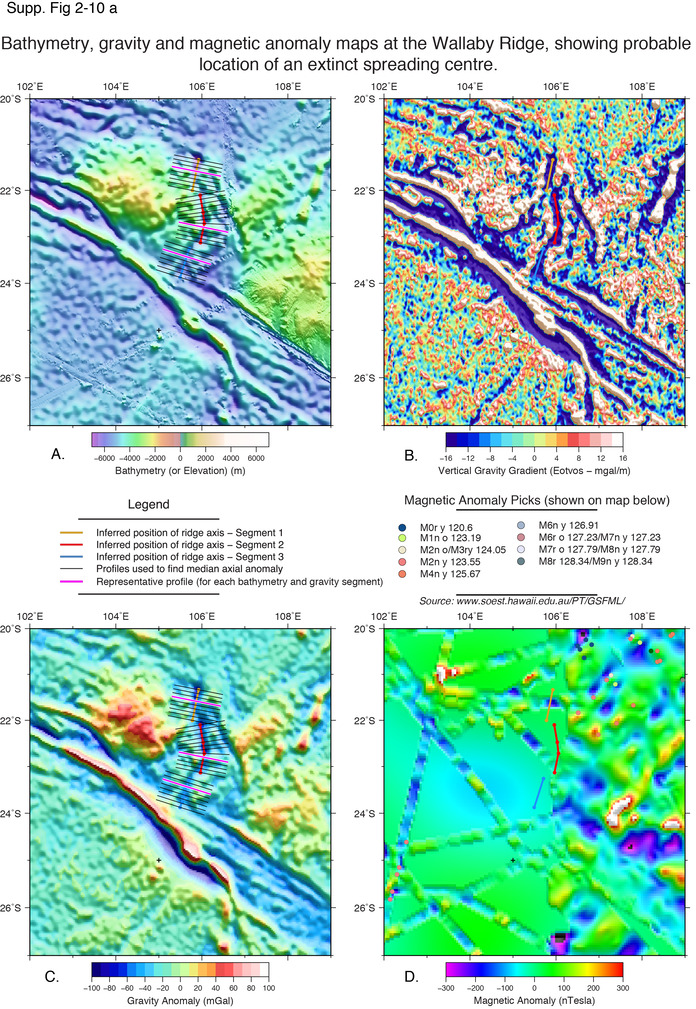| Ocean: | Indian |
| Spreading center type: | Large-scale extinct MOR |
| Time of cessation: | Ca. 100 Ma, during the Cretaceous Normal Superchron (Mihut and Müller, 1998) |
| Subsequent active spreading center: | Wharton Basin Ridge or possibly the Perth AP spreading center |
The structure referred to as the Wallaby Ridge is an approximately north-south trending trough that is subparallel to the northern West Australian coastline and is a segmented structure. The trough is situated between the Wallaby and Zenith Plateaus, in close proximity to the eastern edge of the Zenith Plateau and terminates abruptly, just north of 21 S. Both of the plateaus that bound the Wallaby Ridge are thought to have crustal thickness of around 18km (Mihut and Müller, 1998) and are considered to represent large igneous provinces, yet given that they have not been sampled at depth there is a possibility that they could contain some thinned continental crust. Few studies have directly discussed the ridge itself because there is limited data available to constrain the age and nature of the structure.
One of the few studies that directly refers to the Wallaby Ridge is that of Mihut and Müller (1998), and they propose that the ridge was a northward propagating spreading center that became extinct after a ridge-jump to the west in a large-scale plate reorganization at around the time of anomaly M0. They describe it as 'staircase' shaped and stepping to the west further to the north, similarly to the inferred Sonne extinct ridge to the east, which has less distinctive axial-ridge morphology (Mihut and Müller, 1998). Symmetric magnetic anomalies are reported either side of the structure, covering sequence M2 and M3, although it apears that only one profile is seen to cross the northern extent of the ridge from the data used in this study (Mihut and Müller 1998, Figure 8).
A major Indian Ocean plate boundary reorganization is proposed at around the time of M0 (Mihut and Müller, 1998). It is proposed that the Wallaby propagator may have been formed due to plume-ridge interaction, although problems with this scenario are also discussed (Mihut and Müller, 1998).
We digitised the segments of the Wallaby Ridge according to the proposed location of Mihut and Müller (1998). In profile the inferred axial trough is seen to be largely symmetric, although the western flank is slightly more elevated. The valley is one of the deepest that we report and the inferred northern segment of the ridge is more than three standard deviation removed from the mean of well-defined extinct ridges, although the gravity anomaly of this segment is only slightly above one standard deviation from the mean.
Mihut, D. and Müller, R.D., 1998. Volcanic margin formation and Mesozoic rift propagators in the Cuvier Abyssal Plain off Western Australia. Journal of Geophysical Research: Solid Earth, 103(B11), pp.27,135–27,149.


